Subject Matter Experts
Invaluable insight from industry-recognized SMEs.
Leverage 30+ years expertise to reveal technology innovation that impacts your organization and helps inform decision-making.

All analysis is curated by our industry-recognized, trusted Subject Matter Experts and leverages our 30+ years expertise of reverse engineering expertise to reveal technology innovation that impacts your organization and helps inform decision-making.
 Dan Kim, Chief Strategy Officer, TechInsights
Dan Kim, Chief Strategy Officer, TechInsights Dan Kim is a globally recognized expert and experienced leader in semiconductor markets and policy. Throughout his career, Kim has served in executive roles at semiconductor companies such as SK hynix and Qualcomm and as a senior official with the United States Government across four presidential administrations. Prior to joining TechInsights, he was chief economist and director of strategic planning and economic security at the U.S. Department of Commerce for its CHIPS for America program. While there, he set the strategic vision and implemented the $39 billion incentives program, which has since attracted more than $450 billion in capital investments.
Sustainability
 Stephen Russell: Senior Technical Fellow
Stephen Russell: Senior Technical FellowAs Senior Technical Fellow for Sustainability at TechInsights, Stephen provides expert insight into carbon footprint across the entire technology life cycle, from raw materials through product manufacturing, use and end of life. Stephen also works on unique initiatives to characterize Scope 3 emissions in the use phase of consumer electronics products, with further reaching implications for data center and automotive applications.
Previously serving as TechInsights’ power semiconductor subject matter expert, Stephen has 20 years of experience in the semiconductor sector with a background in several semiconductor technologies for energy efficiency. His PhD thesis demonstrated what was at the time the highest frequency diamond transistor reported.
Stephen is internationally recognized for technical research contributions and collaborations. These include being awarded best paper 2018 for the IEEE Journal Transactions on Power Electronics paper “High Temperature Electrical and Thermal Aging Performance and Application Considerations for SiC power DMOSFETs”. He led an exploratory research project in gallium oxide for power devices, presenting findings to the Royal Institution, London. While working in industry, he led the development of a new silicon IGBT product line and instigated a research and development project to use silicon carbide JFETs in circuit protection applications.
 Lara Chamness: Senior Sustainability Analyst
Lara Chamness: Senior Sustainability AnalystIn her role as Senior Sustainability Analyst, Lara Chamness provides quantitative and qualitative analysis for TechInsights’ Sustainability practice, with a primary focus on expanding the Semiconductor Manufacturing Carbon Model. Lara has over 20 years of semiconductor industry experience creating industry benchmark reports and analysis.
Lara has worked at Honeywell, SEMI, Greene Tweed, and Infineon, where she is known for her customer-focus, collaborative approach, and commitment to providing accurate and timely data. Lara earned BA and MS degrees in environmental sciences from the University of California, and an MBA from Santa Clara University.
Reverse Engineering
Image Sensor
 Jefferson Chua: Image Sensor Circuit, Subject Matter Expert
Jefferson Chua: Image Sensor Circuit, Subject Matter ExpertJefferson Chua is a senior Circuit Design Analyst and IoT Technical Analyst who has been at TechInsights for over 22 years. Jefferson performs circuit extraction for both transistor and system level schematics from layouts, and high-level analysis on analog, RF, and power management circuits. Prior to joining TechInsights, Jefferson was a senior Circuit Design Engineer at Rohm LSI Design.
 Wilson Machado: Senior Process Analyst
Wilson Machado: Senior Process AnalystWilson has been with TechInsights over 10 years, and currently holds the position of Senior Process Analyst, where he has specialized in technical structural and material analysis of CMOS image sensors. Wilson’s experience at TechInsights encompasses other areas, such as logic ICs, memories and IC packages. Additionally, he provides technical support for patent licensing and patent evaluation based on reverse engineering. Wilson has over 35 years of experience in the semiconductor industry, and during his professional career he worked in several countries (Brazil, Germany and Canada) in a variety of roles including process analysis, process engineering, reliability and failure analysis, where he gained a deep understanding and knowledge of semiconductor devices fabrication processes and semiconductor device physics. Wilson has an M.Sc. in Electrical Engineering from Carleton University, Canada.
 Dan McGrath: Senior Technical Fellow, Image Sensor
Dan McGrath: Senior Technical Fellow, Image SensorDan has worked for over 40 years specializing in the device physics of pixels, both CCD and CIS, and in the integration of image-sensor process enhancements in the manufacturing flow. He received his doctorate in physics from John Hopkins University. He chose his first job because it offered that designing image sensors “means doing physics” and has kept this passion front-and-center in his work.
Dan has worked at Texas Instruments, Polaroid, Atmel, Eastman Kodak, Aptina, BAE Systems and GOODiX Technology and with manufacturing facilities in France, Italy, Taiwan, China and the USA. He has been involved with astronomers on the Galileo mission to Jupiter and to Halley’s Comet, with commercial companies on cell phone imagers and biometrics, with scientific community for microscopy and lab-on-a-chip, with robotics on 3D mapping sensors and with defense contractors on night vision.
Dan’s publications include the first megapixel CCD and the basis for dark current spectroscopy (DCS). In addition to being a Senior Technology Fellow - Image Sensors with Techinsights, he is a visiting researcher pursuing his interest in dark current with ISAE Supaero.
RF Systems
 Radu Trandafir: Subject Matter Expert/Technical Fellow – Mobile RF and Wi-Fi/IoT Technical Analysis
Radu Trandafir: Subject Matter Expert/Technical Fellow – Mobile RF and Wi-Fi/IoT Technical AnalysisRadu Trandafir holds a Master’s degree in Electronics and Telecommunications from Politehnica University in Bucharest and brings more than 30 years of experience in the telecommunications industry. His expertise spans RF hardware systems design and technical IP analysis, with a deep background in mobile radio and wireless technologies. As a Subject Matter Expert at TechInsights, Radu provides authoritative insights into mobile and wireless systems, drawing on his extensive technical and industry experience. Before joining TechInsights, he held roles at leading companies such as Nortel and Ericsson.
 John Sullivan: Senior Circuit Analyst
John Sullivan: Senior Circuit AnalystJohn Sullivan is a Senior IP Solutions Analyst with TechInsights. His more than 20 years within the organization – first with Chipworks, now TechInsights – have seen him in several different roles, from Circuit & Patent Analyst, Engineering Circuit Manager, to the IP side of the house, and into his current position. His experience has made him a well-rounded patent analyst and reverse engineering professional. His current role involves planning and executing programs that help TechInsights clients leverage their intellectual property.
Consumer Products
 Stacy Wegner: Subject Matter Expert
Stacy Wegner: Subject Matter ExpertStacy Wegner is the Senior Technology Analyst at TechInsights’ Teardown division, responsible for ensuring the highly technical data produced by our analysts is transformed into consumable competitive intelligence. Stacy has an extensive background in advanced technology devices, marketplace analysis, and TechInsights products and practices.
Power
 Dr. Eugene Hsu: Technical Fellow, Power Semiconductor
Dr. Eugene Hsu: Technical Fellow, Power SemiconductorDr. Eugene Hsu provides Technical Support for patent licensing and patent evaluation based on reverse engineering, as well as technical structural and material analysis semiconductor devices packages. He has over 15 years of academic and professional experience in semiconductor fabrication, material analysis, and reverse engineering, and is knowledgeable in areas spanning semiconductors, device physics, optics, and photonics, as well as electrical engineering. Eugene received his Ph.D. in Engineering Physics in 2012 from McMaster University, Canada. Since starting at TechInsights in 2012, he has also gained skill in sample preparation for process and circuit analysis. He has authored various analysis reports including Teardown and Functional Analysis of Consumer Products, Device Fabrication Processes of Processors, Image Sensors, Memory, and MeM Devices. He currently works with the IP team, providing technical analysis and reviews for patent portfolio support. Throughout his academic and professional career, he has gained familiarity with analytics techniques including and not limited to SEM, TEM, AFM, AES, SIMS, EDS, EELS, etc., and continues to employ a combination of these techniques in reverse engineering related analysis. He has twenty-three peer-reviewed journal, conference, and magazine publications, including two articles in Applied Physics Letters.
 Deyan Chen: Process Analyst
Deyan Chen: Process AnalystDeyan Chen currently serves as a Process Analyst within the Reverse Engineering (RE) division at TechInsights. He specializes in conducting technical structural and material analyses, with a specific emphasis on power devices in the PMIC and wide bandgap (WBG) application fields. With more than 17 years of experience in the semiconductor manufacturing field, Deyan Chen possesses extensive expertise, particularly in silicon-based power device physics and fabrication processes. Prior to joining TechInsights, he held roles at prominent foundries like SMIC and GlobalFoundries, as well as a design house. His responsibilities included TCAD simulation, SPICE modeling, and providing design support for the development of power/CMOS/sensor devices. These roles enabled him to cultivate a deep comprehension of semiconductor device fabrication processes and device physics. Additionally, he has published over 25 worldwide patents covering power, memory, and CIS devices.
Battery
 Reza Moghaddam: Process Analyst
Reza Moghaddam: Process AnalystReza joined TechInsights in 2021, with over a decade experience in renewable energy systems such as Li batteries, fuel cells, water electrolyzers, and supercapacitors. He has extensive experience in scientific instruments including electrochemical stations, cameras, spectrographs, and surface-probing microscopes. In his current role at TechInsights, he conducts reverse engineering/process analysis on Li batteries, power management/generating as well as logic devices. Reza holds a PhD (distinction) in Electrochemistry from Memorial University. Prior to joining TechInsights, he was an academic researcher and technology consultant for several years. He has published 30+ journal papers and 1 US Patent and has peer-reviewed journal papers.
Logic and Processor
 Rajesh Krishnamurthy
Rajesh KrishnamurthyRajesh Krishnamurthy is a senior analyst for TechInsights, an Ottawa, Canada-based reverse engineering company. TechInsights analyses a broad range of devices, giving Rajesh a unique overview of what technologies make into the real world of semiconductor production. Rajesh graduated in 1998 with PhD in Materials Engineering from University of Western Ontario, London, ON, Canada. He has more than 20 years of experience working as an analyst, focusing on semiconductor process development, and R&D of semiconductor materials and devices. He joined the TechInsights team in 2006.
 Alexandra Noguera: Senior Analyst
Alexandra Noguera: Senior AnalystAlexandra Noguera is a Senior Logic Analyst at TechInsights where she provides analysis and technical support for competitive intelligence on reverse engineering of advanced CMOS technology nodes, leading SoC design and standard cells/layout analysis, and identifying IP blocks for SoC floorplan. She has a Bachelor’s degree in Electrical Engineering from Carleton University, in Ottawa, Ontario, Canada and 10 years of experience working in semiconductor circuit analysis. Alexandra joined Chipworks (now TechInsights) in 2012. Her principal focus is leading SoC Design Analysis projects involving layout-like analyses extracting standard cell libraries, routing efficiency, power grid, clock tree, etc., across TSMC, Samsung and Intel technologies. She is also actively involved in identifying IP blocks for SoC floorplans, along with estimating gate counts, bit cell density, and standard cell libraries characterization, as well as analysis of circuit layout for translation into schematics, followed by hierarchical representation of circuit schematics focused on analog front ends, digital logic, and memory cells. For the last 3 years she has been responsible for content creation for advanced CMOS logic process, including competitive benchmarking trends and quarterly briefings.
 Dr. Porter Seo: Senior Technical Fellow, Logic
Dr. Porter Seo: Senior Technical Fellow, LogicDr. Porter Seo is a compute and logic semiconductor expert with nearly 30 years of industry experience. He holds a Ph.D. in Electrical and Electronic Engineering, specializing in device physics and lithography, and has led innovations across DRAM, foundry, and DTCO development. His expertise spans circuit design, standard cell architecture, SRAM, and analog conception, with a career bridging design and manufacturing. At TechInsights, he delivers customer-focused insights into compute and logic technologies.
Memory
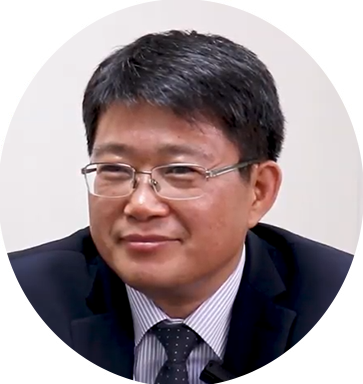 Dr. Jeongdong Choe: Senior Technology Fellow/Subject Matter Expert
Dr. Jeongdong Choe: Senior Technology Fellow/Subject Matter ExpertJeongdong Choe has a Ph.D. in electronic engineering and 30 years’ experience in semiconductor process integration for DRAM, (V) NAND, SRAM, and logic devices. A Ph.D. in Electronics (Semiconductor) from Sungkyunkwan University, he also holds master’s and bachelor’s Degrees in Materials Engineering (Metallurgical) from Yonsei University. His background includes positions as a Team Lead in R&D for SK-Hynix and Samsung, where he optimized process and device architectures with state-of-the-art technologies for mass production. At TechInsights he has been focusing on technology analysis on semiconductor process, device, and architecture. He has authored numerous articles on memory technology including DRAM Technology Trends, 2D and 3D NAND Process/Device Integration Details, and Emerging Memory such as STT-MRAM, XPoint, ReRAM and FeRAM Design and Architecture. He quarterly produces and updates a widely distributed memory roadmap on DRAM, NAND, and Emerging Memory. Jeongdong has over 100 filed/issued patents in semiconductor process integration for DRAM, (V)NAND, SRAM, and logic devices.
 Mike Howard: Director of Memory Markets
Mike Howard: Director of Memory MarketsAs Director of DRAM and Memory Markets at TechInsights, Mike Howard has over 15 years of experience tracking and researching the memory industry. As the resident DRAM guy, Mike enjoys the process of forecasting and explaining the ebbs and flows of a $100 billion, unheralded segment of the semiconductor market.
In this role, Mike focuses on delivering a comprehensive understanding of the entire memory landscape through data and market briefings that provide clients with an informed framework for the evaluation of markets. His dedication to memory research has inspired a loyal client base that consistently turns to Mike to understand the what, how, and why of changes to the DRAM and memory markets. He has an ability to contextualize what is often dry material and data and transform it into a meaningful narrative for his clients.
Prior to joining TechInsights, Mike served as Vice President of Yole Développement, where he built the memory research service from the ground up. Through these efforts, he was able to gain over 50 clients in just a few years.
 Walt Coon: Director of NAND and Memory Markets
Walt Coon: Director of NAND and Memory MarketsWalt Coon serves as the Director of NAND and Memory Markets at TechInsights, with over 20 years of experience in the memory industry. He leads the NAND memory market focused research, delivering a comprehensive understanding of the entire memory landscape through data analysis and market briefings. Though highly volatile, NAND represents a growing part of the overall semiconductor market and Wal takes pride in his ability to help customers understand this ever-changing market. He enjoys the process of distilling large, complex datasets into palpable learnings, whether it’s dramatic changes to pricing, consolidation rumors, geopolitical events, or new demand drivers.
Before joining TechInsights, Walt accrued 7 years of market research experience at IHS Markit as Director of Memory and Storage, and at Yole Développement as Vice President of NAND and Memory Research. Walt also spent 16 years at Micron Technology in a variety of roles, from engineering to corporate development. This diverse background allows him to approach problem solving from multiple angles, using both business and technical perspectives to deliver thoughtfully designed solutions that align to the strategic and tactical needs of his clients. A jack-of-all-trades, Walt has built an accomplished career through the opportunities he’s had to help his clients achieve success.
 Jun Lu: Senior Process Analyst
Jun Lu: Senior Process AnalystJun Lu is a Senior Process Analyst at TechInsights where she provides technical support for patent licensing and patent evaluation based on reverse engineering, as well as technical structural and material analysis of semiconductor devices and packages. She has over 20 years of professional experience in semiconductor manufacturing, R&D and process development, and reverse engineering, TEM microscopy and material analysis. She joined Semiconductor Insights’ (now TechInsights) state-of-art reverse engineering lab in 2004 de-processing semiconductor devices layer by layer and routinely performing measurements and materials analyses on semiconductor devices through SEM and TEM imaging, SEM-EDS, TEM-EDS, and TEM-EELS. She has been involved in the process and structural analysis of memory devices, advanced logic CMOS devices, MEMS devices, LCD display panels, LEDs, and multiple device packages. She also provides technical evaluation and rating of patents and analysis of device fabrication processes and structures to provide evidence of use for clients. Since year 2017 she has been responsible for creating graphical emulation of process flows using CAD tools for memory devices.
 Chi Lim Tan: Memory, Principal Technology Analyst
Chi Lim Tan: Memory, Principal Technology AnalystChi Lim is the Principal Technology Analyst in the memory team at TechInsights, supporting memory related topics and custom analysis. He has extensive experience in process integration, technology development & transfer, and research & development for NOR, NAND and embedded FLASH. He had contributed to the successes of SSMC (NXP-TSMC joint venture), GLOBALFOUNDRIES, IMEC and Micron, prior to joining TechInsights. He earned both his master and bachelor’s degrees from the National University of Singapore.
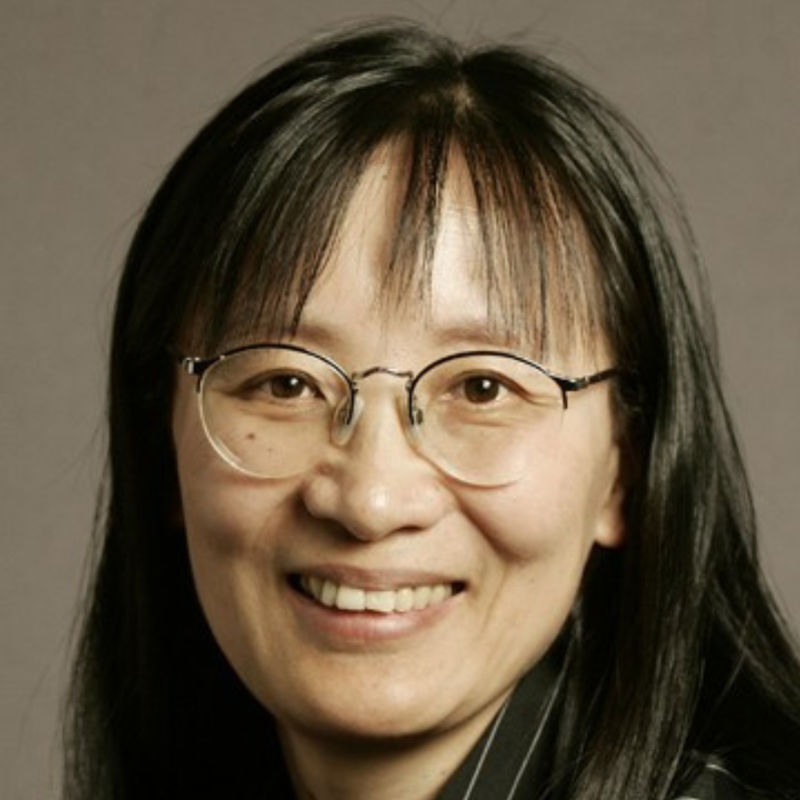 Shaoqing Wu: Senior Circuit Analyst
Shaoqing Wu: Senior Circuit AnalystShaoqing Wu is a senior circuit analyst at Techinsights where she provides circuit analysis and technical support for Intellectual Property and competitive intelligence. She has 25 years of professional experience in the organization and has worked on a wide variety of devices providing technical analysis and support for many of TechInsights’ clients and product channels, including circuit analysis, patent portfolio evaluation, claim analysis & litigation support. Her focus is on DRAM, SRAM, nonvolatile and other types of memories.
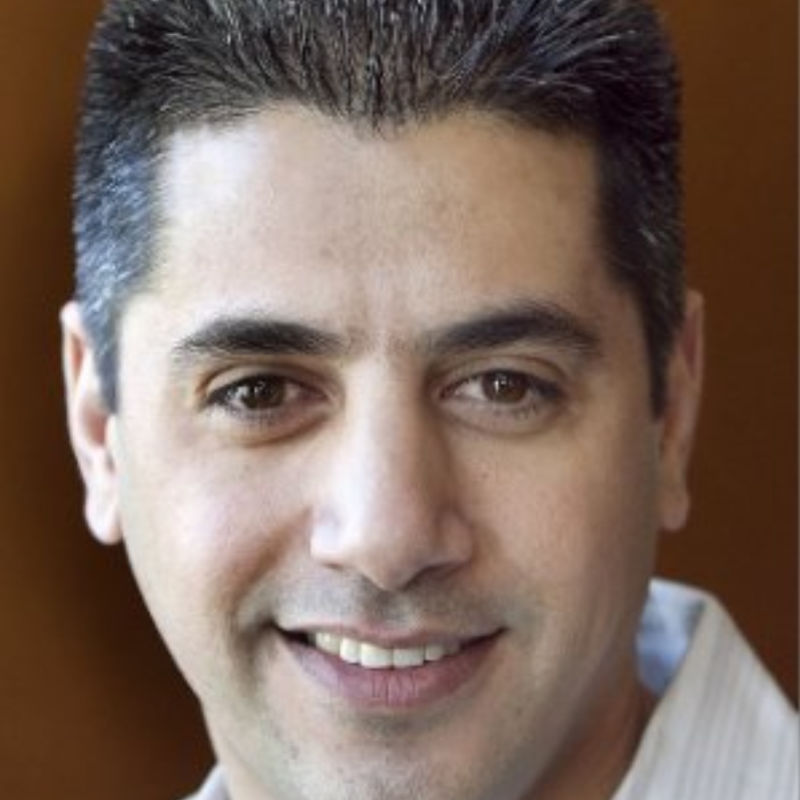 Mohammad Ahmad: Senior Systems Analyst
Mohammad Ahmad: Senior Systems AnalystMohammad Ahmad is an experienced Systems Analyst and Subject Matter Expert in Flash Memory and Waveform Analysis at TechInsights. He has over 23 years of experience in providing technical and patent analysis to global clients in the semiconductor industry. Mohammad specializes in reverse engineering, circuit extraction, and internal waveform probing of various semiconductor memories, including 3D NAND, NOR Flash, embedded Flash and DRAM. He also possesses expertise in intellectual property including patent claims analysis, patent/portfolio evaluation and mining. At TechInsights, Mohammad is responsible for developing flash memory subscription for building the semiconductor market technology content platform and managing large patent portfolio assessments to assist clients in maximizing their return on investment in intellectual property.
Market Analysis
 Brett Azuma: Managing Director, Market Analysis
Brett Azuma: Managing Director, Market AnalysisIn his role as the managing director of Market Analysis, Brett Azuma strives to ensure TechInsights is the pinnacle of actionable, in-depth intelligence in the semiconductor industry. Brett has built a career and reputation spanning 4 decades, and nearly all the continents, by providing informed analysis that allows customers to capitalize on market opportunities with insights that create better business decisions.
Brett brings over 35 years of leadership experience and credibility in the technology and telecom industries, successfully leading projects across research and analysis, engineering, marketing, product, operations, and sales. His previous roles as Head of Research at S&P Global Market Intelligence, Chief Research Officer at 451 Research, and Chief Analyst at Dataquest, coupled with his extensive experience in the integration of over 20 different analyst firms, has uniquely positioned him to drive and lead high impact differentiated market analysis at TechInsights.
Along with industry credibility, Brett’s leadership as group managing director creates an efficiency that brings out the best in everyone around him. He has an impeccable eye for talent acquisition and retention, recognizing the inherent hard and soft skills necessary for effective market analysis. During his time with Ovum, he led an integration effort that reduced analyst turnover from 30% to 2% by providing direction that created a clear vision for the future of the business.
Brett Azuma is the experts’ expert. He has forged a profession of developing successful market analysis on a global scale by fostering loyal, customer-centric organizations that are without question, strategically and financially sound.
TECHCET
 Lita Shon-Roy: President/CEO and Founder of TECHCET
Lita Shon-Roy: President/CEO and Founder of TECHCETLita has worked throughout the semiconductor supply chain, leading strategy, business development, marketing and sales for chip designers, equipment OEMs, and material suppliers for over 30 years. Her experience spans from process development of memory chips to business development of gases & precursors and capital equipment. She developed new business opportunities for companies such as RASIRC/Matheson Gases, Air Products & Cheu micals, and IPEC/Speedfam, and managed marketing and sales in companies such as Air Products/Schumacher, Brooktree/Rockwell, and Hughes Aircraft. Ms. Shon-Roy is considered one of the leading experts in electronic materials market analysis and b siness development. She has authored and co-authored 100’s of articles, reports and texts on semiconductor process materials markets, trends, and worldwide supply chain issues, and has been quoted in the Wall Street Journal and featured on BBC News. She holds an M.B.A. from California State University, Dominguez Hills, a M.S.E.E. from the University of Southern California, and a B.S. in Chemical Engineering from UC San Diego.
 Karey Holland, Ph.D.: Chief Strategist and Co-Founder of TECHCET
Karey Holland, Ph.D.: Chief Strategist and Co-Founder of TECHCETKarey has specialized in advanced semiconductor transistor fabrication, including metrology, CMP, ALD & CVD, photolithography, and interconnect technologies for over 30 years. She was CTO of start-up NexPlanar, strategic marketing senior manager at FEI, on the Board of Directors at Nova Measuring Instruments, VP of technology at CMP pad supplier Thomas West, and CTO and VP of process technology at CMP OEM IPEC/SpeedFam-IPEC. Previously, she was manager of manufacturing planning for Motorola’s Microprocessor and Memory Technology Group. Her career began in process engineering at IBM where she managed DUV lithography technology development, and worked on interconnect integration for 4 and 16 Mb DRAMs, which were the first chips in the world to use tungsten plugs and CMP for all interconnect dielectrics. She holds a Ph.D. in analytical chemistry from Pennsylvania State University, a M.S. in analytical chemistry from Purdue University, and a B.A. in chemistry from Albion College.
 Mike Walden: VP of Critical Materials Information at TECHCET
Mike Walden: VP of Critical Materials Information at TECHCETMike is TECHCET’s expert in modeling industry trends and forecasting semiconductor key indicators including semiconductor revenues, OEM equipment revenues, wafer start volumes and revenues. He is also in charge of market research and analysis of silicon wafers and sputtering targets materials. Mike has over 25 years of experience in the semiconductor industry that stems from IBM in cost analysis and supply chain management; he has helped grow businesses with leadership roles at SUMCO, MEMC/Sun Edison, Zing Semiconductor and Okmetic. Mike holds an M.S. in Electrical Engineering from Virginia Tech and a B.S. in Physics and Mathematics from Morehead State University.
 Yan Luo: Market Analyst at TECHCET
Yan Luo: Market Analyst at TECHCETYan is in charge of identification of economic trends, market research and forecast modeling. She is tri-lingual in English, Chinese and Korean and works to support the Company’s customers from Far East to West. She has a B.S. degree in Mathematics/Economics from the University of California at San Diego and a M.S. degree in Business Analytics from University of San Diego.
 Jonas Sundqvist, Ph.D.: Sr. Technology Analyst of TECHCET
Jonas Sundqvist, Ph.D.: Sr. Technology Analyst of TECHCETJonas covers ALD and CVD precursors and related technologies. His over 20 years of work experience includes Group Leader of the Thin-Film Technologies Group at The Fraunhofer Institute for Ceramic Technologies and Systems (IKTS), Clean Room Operations Manager for Lund Nano Lab, and Group Leader of the ALD & High-k devices group at Fraunhofer’s Center Nanoelectronic Technologies (CNT), which included 28nm node work for GLOBALFOUNDRIES Fab1. Previously, at Infineon Memory Development Centre (MDC), he developed high-k and metal nitride ALD processes, and at Qimonda, he was a materials manager focused on the ALD / CVD precursors supply-chain. He is the founder of BALD Engineering, an independent blog and networking platform for ALD. He holds a Ph.D. and a M.S. in inorganic chemistry from Uppsala University, Sweden and the Institute for Micromanufacturing, Louisiana Tech, and a B.S. in electrical and electronics engineering from Lars Kagg. He holds nine patents and 40 related scientific publications.
 Robert Syvret: Sr. Technology Analyst at TECHCET
Robert Syvret: Sr. Technology Analyst at TECHCETRobert is responsible for specialty gases and chemicals, precursors, mechanical components and assemblies, and related technologies. An award-winning chemist and ACS Fellow, Dr. Syvret has held senior technical roles at industry leaders including Air Products, Arkema, and Electronic Fluorocarbons, where he spearheaded innovations in electronic gases, high-aspect-ratio etchants, and low-GWP fluorochemicals. With over a dozen patents and numerous peer-reviewed publications, he brings unmatched expertise in fluorochemical synthesis, industrial gas technologies, and semiconductor materials. He also serves as a trusted consultant to global corporations and government agencies and continues to influence the field through advisory roles and academic collaborations.
 Jim Schlueter: Sr. Technology Analyst at TECHCET
Jim Schlueter: Sr. Technology Analyst at TECHCETJim is responsible for CMP consumables and PVD materials market and technical trend analysis. He has over 30 years of semiconductor experience in business and process development from SpeedFam-IPEC/Novellus, SDCMaterials, SEMATECH, and most recently at DuPont/EMD, serving in leadership roles which include CTO and Director of CMP Slurry Development. He is highly knowledgeable of materials and metals needed for device interconnects in front-end and back-end processes. Jim’s technical leadership experience affords him deep connections with material suppliers and chip fabricators allowing him to track technical and market trends and challenges. Earlier in his career, Jim led technical development projects at Easton Corporation on advanced PVD processes. He has a BS in Engineering from S. Dakota State University.
 Tianyi Zhu: Jr. Market Analyst
Tianyi Zhu: Jr. Market AnalystTianyi Zhu is TECHCET’s Jr. Market Analyst, focused on forecast modeling, market research and data analysis with expertise in tariffs and trade regulations. She has experience in dashboard development, and large-scale data processing across B2B operations. She has managed complex ETL pipelines, built scalable analytics solutions, and collaborated cross-functionally to deliver data-driven insights that support strategic and operational decision-making. Ms. Zhu holds a Bachelors of Commerce Degree from York University, Toronto, and a Master of Science Degree in Analytics from Georgia Institute of Technology.
Semiconductor Manufacturing Economics
 Scotten W. Jones: President, Manufacturing Economics
Scotten W. Jones: President, Manufacturing EconomicsScotten W. Jones (Scott) has over 40 years of experience in the semiconductor and MEMS industries. Scott has designed, built and run wafer fabs, been co-general manager of a semiconductor division and vice president of engineering at a MEMS start-up. As founder of IC Knowledge LLC, Scott served as president for 23 years building IC Knowledge into the world leader in cost and price modeling of semiconductors. In late 2022 IC Knowledge was acquired by TechInsights where Scott now serves as President of Semiconductor Manufacturing Economics and a Senior Fellow. Scott's expertise is in semiconductor and MEMS technology, cost and economics and he has widely published in these areas as well as leading the development of world leading cost and price models and more recently carbon models. Scott has published widely on semiconductors and MEMS and is a frequent contributor to www.semiwiki.com as well as speaking at leading conferences.
The McClean Report
 Brian Matas: Market Research Analyst
Brian Matas: Market Research AnalystFor over 25 years, Brian Matas has been providing clients with a thorough understanding of market trends/sales, capital spending, foundry, and the potential impact on systems growth. Along with his team at TechInsights, he covers the semiconductor industry markets for clients using historical data, economic analysis, and forecast trends.
Driven by curiosity and a background in physics and aerospace engineering, Brian is dedicated to learning all there is to know about the advanced technology used to design and manufacture semiconductors and the applications where they are used. Brian points to his personal and professional global travels as giving him the foundation necessary to understand the varying and unique needs of clients in different parts of the world. He’s always curious as to how and why world economies and circumstances will impact the semiconductor industry.
In his role as Market Research Analyst, Brian is responsible for researching, analyzing, and forecasting global trends and developments across the entire semiconductor industry for TechInsights’ McClean Report, an annual forecast and analysis of the semiconductor industry, with an emphasis on the memory and analog ICs markets. In addition to his day-to-day tasks, Brian is also a contributing author for TechInsights bi-weekly research bulletins.
 James Sanders: Senior Analyst
James Sanders: Senior AnalystJames Sanders is a Senior Analyst at TechInsights with over 5 years of experience as an industry analyst, and 7 years of experience as a technology journalist. James has a passion for researching the innovations being made possible through high performance and quantum computing and is fascinated by application processor and system architecture design that enables these innovations. He enjoys having the ability to work closely with clients and provide insights on the value and utility of these new advancements.
Before joining TechInsights, James worked as a Research Analyst on the Cloud Transformation team at 451 Research where he led the analysis of quantum computing hardware and software, quantum sensing, quantum networking, and the applicable use cases and industry impact of quantum technologies. He also developed thought leadership reports on quantum computing, cloud resource management, and the environmental sustainability of cloud computing.
Manufacturing Analysis
 G. Dan Hutcheson: Vice Chair, Senior Research Fellow
G. Dan Hutcheson: Vice Chair, Senior Research FellowDan is Vice Chair of TechInsights Inc. He is a recognized authority on the semiconductor industry, winning SEMI’s Sales and Marketing Excellence Award in 2012 for “empowering executives with tremendous strategic and tactical marketing value" through his e-letter, The Chip Insider®; his book Maxims of Hi-Tech, and his many interviews of executives.
As some industry leaders have said, “He is the marketing voice and expert for the industry.” “Dan has methodically captured the essence of the industry and produced it in such a way for all to benefit … He has been such an integral part of the industry for so long, it is difficult to imagine the industry without his contributions.”
Dan’s public work on the industry has often focused on challenging predictions of the demise of Moore’s Law that date back decades by demonstrating how doomsayers have been outpaced by emergent behavior through the innate ability of technologists to innovate.
 Risto Puhakka: General Manager, Semiconductor Market Analysis
Risto Puhakka: General Manager, Semiconductor Market AnalysisWho better to provide expertise in the semiconductor industry than someone who’s accrued 27 years of semiconductor manufacturing expertise as an analyst, business leader, and business owner. As General Manager of Semiconductor Market Analysis, Risto Puhakka is the go-to expert in the semiconductor capital equipment market and semiconductor manufacturing supply chain
Risto’s work has covered an array of client projects in a variety of semiconductor manufacturing segments. He works diligently to deliver market sizing and forecasting that helps to identify the best markets for any given technology or application.
Throughout the years, Risto has advised organizations around the world including ASML, Intel, Zeiss, IBM, ASM, Applied Materials, and Global Foundries. He is a regularly invited speaker at conferences about diverse topics in semiconductor manufacturing and capital equipment markets. Risto credits his success to his ability to understand the full scope of the client issues before making any kind of recommendation or giving advice. He has a passion for advising companies in the semiconductor manufacturing markets and uncovering insights to inform better business decisions.
 Andrea Lati: Director of Market Analysis
Andrea Lati: Director of Market AnalysisIn his role as Director of Market Analysis, Andrea Lati enjoys working closely with clients, providing his expertise on the semiconductor capital equipment market while developing and managing forecasting models for the larger semiconductor manufacturing market.
With over 20 years of experience, he’s able to offer guidance and support to organizations and government bodies in promoting and shaping policies that enhance semiconductor manufacturing, research and development, and innovation within the semiconductor industry. He is a frequent conference speaker and content contributor to semiconductor organizations around the world.
At TechInsights, Andrea relies on his exceptional problem-solving abilities to help solve complex business challenges faced by clients. Equipped with a background in Mathematics and Economics, over the years Andrea has built a strong foundation in both technical research methodologies and in-depth market knowledge of a variety of areas in the semiconductor markets. His main problem-solving domains include market trends and insights, competitor analysis, market sizing, and SWOT analysis.
Before joining TechInsights, Andrea worked at VLSI Research performing custom studies for a variety of clients and co-authoring The Chip Insider®.
 Boris Metodiev: Director of Semiconductor Manufacturing Analysis
Boris Metodiev: Director of Semiconductor Manufacturing AnalysisAs the Director of Semiconductor Manufacturing Analysis at TechInsights, Boris Metodiev is proud to lead the team recognized for setting the standard in the semiconductor manufacturing consultancy and advisory field. Boris’ expertise provides deep coverage in the semiconductor manufacturing supply chain and market analytics such as forecasts, sales, capacity, equipment, industry structure, market drivers, and pricing. He is often quoted in media publications and maintains a busy conference and vendor briefing schedule.
Through his leadership, TechInsights supplies clients with the most thorough, and accurate technical and geopolitical intelligence in the semiconductor industry. Over the course of his career, Boris has covered a range of positions, market areas, and locations which have provided the opportunities to develop a wide range of skills. He has multiple citizenships, speaks multiple languages, and has lived in multiple countries. It’s this adaptability and willingness to learn that has led to his accomplishments in the multinational, multicultural semiconductor industry. He has an inherent ability to connect with clients and pinpoint their issues—to uniquely address their specific needs.
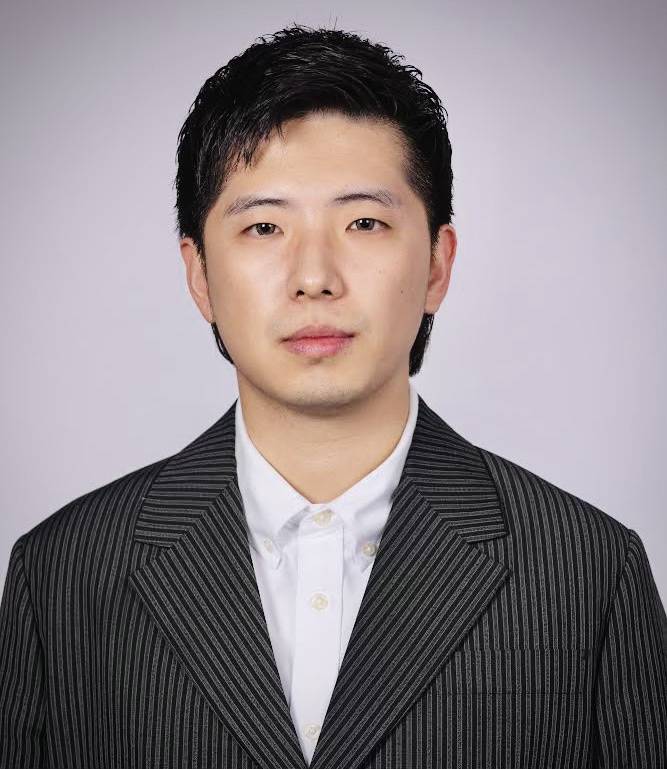 David Ping Wei: Associate Market Research Analyst
David Ping Wei: Associate Market Research AnalystAs an Associate Market Research Analyst at TechInsights, David Ping Wei brings over 4 years of experience in the semiconductor industry. In this role, David focuses on providing clients with market intelligence that’s tailored to the specific locations where they operate to help identify and minimize the risks in decision making. He has a passion for working closely with clients to navigate challenges and develop strategies based on industry trends, technological advancements, and market dynamics. His background in various International Studies has helped him develop research methodologies tailored to monitoring trends and extracting data from local markets in Asia, among other relevant regions for the semiconductor industry.
Previously, David has held positions at Samsung and Futurewei where his insights, analysis, and predictions were frequently adopted by C-level executives.
 Thomas “Gray” Stephenson: Senior Analyst
Thomas “Gray” Stephenson: Senior AnalystThomas “Gray” Stephenson is a Senior Analyst at TechInsights, focused on Critical Subsystems for semiconductor manufacturing equipment. He plays a vital role in not only mapping the semiconductor industry, but also in helping companies make the kind of intelligent investments and decisions that can drive innovation and shape the future of semiconductors. Gray is detail-oriented and self-disciplined, with a demonstrated history of conducting in-depth surveys and market reviews to analyze conditions and create targeted assessments.
In this position, he provides visibility throughout the entire semiconductor value chain, illuminating the relationships between the various market sectors that make up the industry at large. Clients want to know tomorrow, today. Gray has a passion for being able to use the data to find and tell the story that is unfolding within it; for analyzing complex scenarios to understand how they affect different markets and the companies within them.
 Panchami Phadke: Senior Market Research Analyst
Panchami Phadke: Senior Market Research Analyst Panchami Phadke is a Senior Market Research Analyst at TechInsights, with over 2 years of industry experience. She is responsible for gathering, compiling, and analyzing statistical and financial data for a variety of market research channels. Panchami is a dedicated and detail-oriented analyst with a passion for collaborations that contribute to her team’s success. Her primary focus is on Test Connectivity Systems reports including Probe Card, Sockets, and Device Interface Boards with a secondary focus on the market analysis of semiconductor tests for both Memory and Non-memory markets.
Though relatively new to the industry, Panchami is committed to her continued professional growth. She has an MS in Mathematics and an MBA in Finance. Her thesis explores using Markov Chain and Python to analyze and predict the Stock Market trend. Panchami has also published many academic papers and was a presenter at TestConX China 2022, TestConX 2023, SWTest 2023, TestConX Korea 2023, SWTest Asia 2023 and TestConX China 2023.
 Lyndsey Lindt: Senior Market Research Analyst
Lyndsey Lindt: Senior Market Research AnalystIn her role as Senior Market Research Analyst at TechInsights, Lyndsey Lindt has over 7 years of experience compiling financial data, analysis, and reports for the Equipment Database, a large range of Assembly, Test, and Water Fabrication equipment companies in the semiconductor industry. Her work covers semiconductor market shares and includes annual and quarterly forecasts for different segments as well as equipment demand by device type and region.
In addition to the Equipment Database, Lyndsey is also responsible for the Customer Satisfaction Survey at TechInsights. She interfaces with clients directly; updating database entries, performing data accuracy reviews, and running data uploads and queries to produce reports. She has a passion for helping clients and a keen appreciation for the role data plays in informed business decisions. Her background in Marketing Management provides the necessary foundation to quickly, and accurately organize a variety of data that companies rely on.
 Adrienne Downey: Market Research Analyst
Adrienne Downey: Market Research AnalystAdrienne Downey is a Market Research Analyst with over 25 years of industry experience. Throughout her career, Adrienne has covered a variety of semiconductor disciplines spanning memory, end markets, and manufacturing. At TechInsights, she focuses on the advanced packaging techniques of semiconductors that can provide higher performance and lower power devices, including chiplets, wafer-level packaging, and 2.5D and 3D stacking. She has a passion for sustainability research and enjoys having the ability to use data to help clients solve problems and create opportunities.
Before joining TechInsights, Adrienne was the Director of Technology Research at Semico Research where she covered a variety of topics including NFC, smartphones, and 3D printing. In this role, she was also responsible for maintaining a sensor and MEMS manufacturer database while partnering with the manufacturing team to maintain the semiconductor fab database, capital spending, and R&D spending for the semiconductor industry.
 Desiree Brown: Industry Analyst
Desiree Brown: Industry AnalystDesiree Brown is an Industry Analyst at TechInsights, working with the Customer Satisfaction Survey. In a previous role she covered the administrative duties of the CEO and President of the company.
 Nhi Than: Market Research Analyst
Nhi Than: Market Research AnalystNhi Than is a Market Research Analyst at TechInsights who primarily focuses on the test and handler market. She is involved in the Chip Market Research Services (CMRS) and co-manages the equipment database. She produces quarterly and yearly data reports that track the market share of major equipment companies. Previously, she was a Client Services and Data Specialist at the company in charge of supporting customers and performing database updates. She has experience working with customers and know how much data helps drive decision making in the semiconductor business.
Before joining TechInsights, Nhi was awarded an Environmental Impact Internship through the SEAL Awards. She was responsible for conducting extensive sustainability research aimed at finding and defining existing sustainable filters and certifications for e-commerce decision makers. She then used this data to help design a consumer survey addressing the potential interest in sustainable buying options.
 Shereen Vaux: Senior Analyst of Market Research
Shereen Vaux: Senior Analyst of Market ResearchShereen Vaux, Senior Analyst of Market Research at TechInsights, has over 12 years of experience in the semiconductor industry. Her expertise lies in managing forecasting models, including the Semiconductor Forecast, Semiconductor Capital Expenditure Forecast, and Silicon Demand Forecast. She enjoys the process of helping clients fully understand these forecasts so they can accurately connect it to their own, with many reaching out to her directly for insights and expertise.
Shereen also performs market analysis and research on electronics, semiconductor, and equipment markets. Prior to joining TechInsights, Shereen worked for VLSI Research Inc. where she gained exposure to a variety of areas in the semiconductor industry and a solid overview of the supply chain. Coupled with her background in finance, she has a unique ability to understand company financials and identify the proper formulas for a range of analyses. At the end of the day, Shereen understands people, how consumers think—the driving force of the semiconductor industry.
 Louis Tran: Market Research Analyst
Louis Tran: Market Research AnalystLouis Tran comes to TechInsights as a Market Research Analyst, focused on maintaining the forecasting database and performing market analysis and research on semiconductor and capital expenditure forecasts. He has a passion for extracting insights from data, for finding the stories that can help forecast the future. A background in Statistics and his creative mindset provide the analytical framework necessary for not only working with data, but for being able to extrapolate the stories found within it.
In his short time with TechInsights, Louis has proven himself a valuable asset, working on many different analyses that span over manufacturing equipment, IC, and the end market of the semiconductor supply chain. He enjoys being able to provide clients with competitive intelligence about their customers and a variety of other market factors that affect them.
 Greg Lekich: Senior Analyst, Market Research
Greg Lekich: Senior Analyst, Market ResearchGreg Lekich joins TechInsights as a Senior Market Research Analyst with over 10 years of experience across a wide range of markets. While new to the semiconductor industry, Greg has conducted extensive research on a variety of upstream and downstream markets like semiconductor manufacturing, equipment manufacturing, consumer and specialized electronics, and artificial intelligence among others. His background in public policy helps him to analyze the impacts of various government initiatives and regulations that have an effect on the semiconductor market and supply chain. In his role as Senior Analyst, Greg helps provide clients with a clear, unbiased understanding of research relevant to their industry and decision-making environment. He enjoys having the ability to combine data and strategic insights to help inform clients so they can successfully navigate their way to the best possible business decisions.
Before joining TechInsights, Greg oversaw analysis on the EV charging landscape that helped a client successfully formulate a market entry strategy and become a leading player in the rapidly growing EVSE market.
Processor Analysis
 Cameron McKnight-MacNeil: Process Analyst
Cameron McKnight-MacNeil: Process AnalystIn his role as Process Analyst, Cameron McKnight-MacNeil relies on over a decade of industry experience as he analyzes semiconductor advanced packaging technologies. He has a passion for understanding and documenting how and why things work, specifically how the semiconductor industry leverages advanced technologies to unlock new levels of performance in the most advanced devices. In his day-to-day, Cameron regularly analyzes high-performance compute, AI, desktop, and mobile devices. His job is to document how they were made and what makes them unique. At a time when the industry is paying more attention to packaging than ever before, this analysis has proven essential to helping clients understand and monitor crucial industry developments.
In addition to his work as a Process Analyst, Cameron is a primary and co-inventor on numerous patents pertaining to advanced packaging, high-power compound semiconductors, and yield enhancement techniques. Previously, Cameron worked at GaN Systems Ltd (now Infineon) where he was able to join the semiconductor start-up early in its development and contribute to a wide range of technical and marketing achievements.
Microprocessor Report
 Chad Davis: Senior Analyst, Microprocessor Report
Chad Davis: Senior Analyst, Microprocessor ReportIn his new role as Senior Analyst for the Microprocessor Report, Chad Davis brings over 25 years of experience in electronics and semiconductors, as well as 17 years of experience tearing down and analyzing consumer electronics and 5 years of experience working with medical devices. In this position, Chad is responsible for providing analysis on newly released processors and performing research on various aspects of the design, architecture, packaging, and market position. As an analyst, Chad is known for his attention to detail and the wealth of knowledge he’s accumulated from decades of device tear down and analysis. He has a passion for digging into new technologies and devices that have the power to disrupt and redefine the market landscape. His background in Teardown and semiconductor manufacturing helps him to both provide valuable insights for product managers and enable the success of processor designers who rely on him to accurately survey the competitive landscape.
End-Market Analysis
Artificial Intelligence
 Ayush Jain: High Performance Computing Analyst
Ayush Jain: High Performance Computing AnalystAyush Jain joins TechInsights as an Analyst of High-Performance Computing (HPC), researching market drivers and technological developments in the ongoing advancements of the semiconductor industry, like data center chips and the pivotal role they play in shaping future tech landscapes. Ayush has a passion for deep and thorough research, he’s committed to ensuring his analysis always provides substantial value to the end users.
Ayush’s background in electronics combined with his previous role as a Tech Journalist, has helped forge his path into the field of semiconductor market research. He’s been featured by the LinkedIn news team and recognized by various publications for his technology-related articles. In a previous position, Ayush was acknowledged for a comprehensive report he created on the end-to-end cost estimation of implementing Large Language Models (LLMs) in organizations.
 Anand Joshi: AI Technology Analyst
Anand Joshi: AI Technology AnalystWith over 25 years of semiconductor experience and a reputation as an artificial intelligence industry veteran, Anand Joshi leads the coverage on AI at TechInsights. His thorough analysis of AI and concurrent groundbreaking predictions on the AI semiconductor boom of 2016 have made him an in-demand and highly valued advisor and consultant.
Anand has a passion for collaboration, he enjoys working with a wide range of individuals from engineering, sales, marketing, and R&D to create logical solutions related to the future of AI technology, market potential, and strategy. His graphs, reports, and numbers have been used by many AI chip start-ups in their TAM slides, as well as Intel, Microsoft, and Qualcomm, among other companies.
Anand’s standing as a credible AI Analyst has resulted in numerous speaking engagements on topics ranging from AI chipsets to applications to infrastructure. Throughout his career, he’s been involved with advising and consulting a variety of prominent AI companies, with many of them being acquired over the years.
Automotive
 Ian Riches: Vice President, Global Automotive
Ian Riches: Vice President, Global AutomotiveIan Riches serves as the Vice President of Global Automotive at TechInsights. Ian has worked for what is now TechInsights for over 27 years and is recognized as one of the foremost industry analysts in the automotive electronics sector. He has spent his entire career dedicated to either automotive or electronics-related pursuits.
In this role, Ian provides leadership and expertise for the team responsible for producing forecasts for automotive semiconductors. The data that the team produces is acknowledged as the “gold standard” and is regularly quoted in investor relations and client presentation materials. They answer the “when”, “why”, and “how many” on multiple levels, from how many electrified vehicles will be produced, down to the role of wide band-gap semiconductor materials in powering those vehicles.
A born storyteller with a keen eye for detail, Ian’s passion lies in helping clients understand the impacts of the changing dynamics of the automotive industry on their businesses. For Ian, it’s not just providing data, it’s about helping clients understand the story behind the data. He credits this to his career path as an automotive analyst; this allowed him to remain well-connected with the fundamental technologies driving development, as well as the economic and business realities that shape the market.
 Kevin Li: Director, China Market Research
Kevin Li: Director, China Market ResearchKevin Li Jianyu is the Director of China Market Research, with over 16 years of industry experience. Throughout his career, Kevin has accumulated a depth of knowledge in topics related to connected cars, intelligent cockpits, intelligent driving, and 5G/V2X. His detailed research and unique insights into telematics, infotainment, in-vehicle Human Machine Interface, and mobility services have made him a key influencer and leader within the industry. In his role as Director, Kevin is responsible for automotive market research for the Chinese Market, specifically the role of the semiconductor in regard to market forecasts, supply chain analysis, and industry trend identification. He’s delivered numerous consulting projects for automotive clients and enjoys helping companies understand problems concerning product design, service forecast, service strategy, and competing market analyses.
Previously, Kevin has worked for China Unicom/China Netcom as the Senior Engineer and International Cooperation Coordinator and for the Radio Regulatory Committee as a Software & Test Engineer where he focused on the radio monitoring and direction finding of RF signals.
 Asif Anwar: Head of Automotive Data
Asif Anwar: Head of Automotive DataWith 24 years of industry experience, Asif excels in enhancing the automotive sector through his expert analysis at the system, semiconductor, and sensor levels. His extensive knowledge spans powertrain, body, safety, chassis, and electric vehicles. Thanks to his leadership, TechInsights has successfully introduced comprehensive coverage of the electric vehicle segment, establishing it as a key differentiator for the automotive group.
 Kevin Mak: Principal Analyst, Automotive Market Analysis
Kevin Mak: Principal Analyst, Automotive Market AnalysisKevin Mak joins TechInsights as a Principal Analyst in the Global Automotive Practice, supporting both the autonomous vehicle and powertrain, body, chassis, and safety services. He has an appreciation for the development of new technologies and enjoys researching the processing requirements for different automotive applications and the semiconductor technologies that drive up demand, such as silicon carbide power electronics in electrification.
In his role, Kevin performs strategic analysis of automotive electronic systems, semiconductors, and sensors, while specializing in ADAS, advanced vehicle entry systems, electrified powertrains, and in-vehicle networking. He has a reputation as a talented researcher skilled in business planning, analytical skills, international business, and go-to-market strategy. He helps clients estimate market shares in new areas like LiDAR sensors and provides advice on future technologies like ultrawideband passive entry systems, battery technologies, and tunnel magneto-resistive sensing.
Previously, Kevin worked for Strategy Analytics where he tracked supply relations and vendor market shares, legislation affecting ADAS and electrified powertrain demand, and worked to form demand forecasts of global trends on the automotive electronics industry.
 Edward Sanchez: Senior Analyst
Edward Sanchez: Senior AnalystAs Senior Analyst for the Global Automotive Practice at TechInsights, Edward Sanchez has over 20 years of experience in the automotive industry as a journalist, analyst, and consumer. He has a reputation for being informed on trends, technologies, and companies that could have a potential impact on the automotive space. In this role, he covers the Automotive Infotainment, Powertrain, Body, Chassis & Safety, Autonomous Vehicles and Electric Vehicles services.
Edward enjoys working with clients, providing context to issues that aren’t always easily quantifiable on the surface. His background in journalism allows him to approach new information with a critical eye and identify the insights that would be most valuable for clients. He has covered the light truck market for more than a decade, following regulatory changes and shifting consumer preferences in the space such as engine downsizing, the global growth of the crossover segment, the global shift toward electrification, and its implications for consumers, OEMs, Tier-1 suppliers, and charging infrastructure.
 May Chang: Senior Analyst
May Chang: Senior AnalystMay Chang is a Senior Analyst with over 14 years of industry experience. She develops models for the semiconductor industry centered around automotive applications, including the supply network of automotive semiconductors. Previously, May worked for VLSI Research Inc. in a number of roles within Manufacturing Equipment and Critical Subsystems for Semiconductors. May served as the Director of the Customer Satisfaction Survey and Report, implementing the transition from paper to digital reports.
Components
 Eric Balossier: Lead Semiconductor Market Analyst
Eric Balossier: Lead Semiconductor Market AnalystEric is the lead analyst for processors and logic within the semiconductor market analysis group. His main areas of interest are processors, accelerated computing, communication, and SoCs. His research spans all end-market verticals. He works closely with end-market analysts and reverse engineering to decipher the trends in processing architectures and digital semiconductor market transformations.
Eric is a semiconductor industry veteran with experience in R&D for mobile and consumer computing platforms with STMicroelectronics and the International Semiconductor Development Alliance. He has been a market analyst for the last 15 years with STMicroelectronics corporate strategy, start-ups, and a technology-oriented asset manager in Geneva, where he recently led the scientific research with a focus on Artificial Intelligence, composable infrastructure, and accelerated computing – managing a team of analysts addressing cleantech, EVs, and MedTech.
Eric earned a Master of Business Administration degree from the Geneva School of Economics and Management at the University of Geneva, a Master of Engineering in Microelectronics from CentraleSupélec, and a Master of Physics and Nanoscience from the University Paris-Saclay.
 Christopher Taylor: Director, RF & Wireless
Christopher Taylor: Director, RF & WirelessAs the Director of RF & Wireless at TechInsights, Christopher Taylor has over 38 years of experience in the semiconductor industry including digital, mixed-signal, optoelectronics, electronic materials, and semiconductor equipment. Christopher is widely recognized as the go-to expert in semiconductors and microwave acoustic devices in all wireless systems, having written or commissioned more than 300 published reports and creating the RF & Wireless Components market research and strategic advisory service at Strategy Analytics.
In his role, Christopher provides leadership and market research and technology assistance to companies involved in high volume radio components for wireless systems including mobile phones, Wi-Fi, and UWB systems. He has a passion for exploring the commercial applications of new semiconductor technologies in wireless and RF and enjoys helping clients navigate rapid technological changes. He’s able to rely on his background in physics to evaluate the underlying technologies in development for new wireless standards, and to forecast the effects of changes on markets and on the fortunes of companies.
 Jeffrey Mathews: Senior Analyst
Jeffrey Mathews: Senior Analyst Jeffrey Mathews is a Senior Analyst with over 5 years of experience in the Semiconductor and Component markets. At TechInsights, Jeffrey is responsible for creating and driving research products across multiple component domains, scaling business unit revenues, and ensuring industry visibility. His expertise in market analysis and research is widely respected in the industry and his insights on the smartphone component technology market are highly valued by clients. His research focuses on smartphone components reliant on semiconductor technologies including image sensors, display panels, memory chips, and battery cells. He has a passion for researching these continuously evolving market landscapes and uncovering trends that influence technology growth.
Prior to joining TechInsights, Jeffrey worked for International Data Corporation, where he was responsible for researching and analyzing the personal computing devices domain while providing market insights to clients and media.
 Wayne Lam: Principal Analyst, Device Technologies
Wayne Lam: Principal Analyst, Device TechnologiesWayne has over a decade of experience covering the consumer electronic, smartphone, and device manufacturing industry. He is a skilled analyst in mobile technologies, mobile applications and development platforms, market research and forecasting, competitive intelligence, cost analysis, business development, and big-data analytics. Wayne’s background in engineering and experience working in semiconductor fabrication provides a unique point of view that allows him the perspective necessary for deciphering whether a new technology can scale or fail.
 Cedric Malaquin: Service Director of Power, Analog, and Radio Frequency
Cedric Malaquin: Service Director of Power, Analog, and Radio FrequencyCédric is the Service Director of Power, Analog, and Radio Frequency at TechInsights. He brings over 20 years of experience in the semiconductor industry. His primary areas of interest are power semiconductors and RF front-end components, encompassing both compound semiconductors and silicon. His research spans multiple end-market verticals from consumer to automotive and industrial. His background in engineering and experience in technical roles have given him the foundation necessary to not only understand the breadth of the semiconductor industry but also to relay the most salient insights to clients. Prior to joining TechInsights, Cédric worked at Yole where he led the Radio Frequency devices Market Analysis Team.
Devices
 Ken Hyers: Director, Device Technologies
Ken Hyers: Director, Device Technologies As the Director of Device Technologies at TechInsights, Ken Hyers has over 20 years of experience analyzing, forecasting, and advising professionals within the telecommunications industry. He is recognized as an expert in his field, and regularly provides insight for a variety of newspapers, business publications, and wireless trade journals. In his day-to-day, Ken leads the smartphone market research team focusing on technologies that power smartphones while providing market analysis, sizing, and forecasting of these devices through a technology lens. He enjoys having the ability to help clients predict, anticipate, and create the future of their businesses and has a reputation for successfully anticipating pitfalls and creating roadmaps to adoption for emerging technologies.
In previous roles, Ken worked as a Senior Analyst at Technology Business Research where he headed the expansion of the firm’s mobile computing devices syndicated and custom research. He was also a Principal Analyst at Allied Business Research where he designed and launched the Mobile Content Research service.
 Jack Narcotta: Head of Consumer Electronics Market Analysis
Jack Narcotta: Head of Consumer Electronics Market AnalysisAs the Head of Consumer Electronics Market Analysis, Jack Narcotta joins TechInsights with over 20 years of experience in the technology sector. In this role, Jack is focused on helping clients find opportunities in a highly competitive and turbulent market. He has a keen awareness for how the technology we use every day is changing and how to help clients create opportunities in response. At TechInsights, Jack enjoys having the ability to collaborate and provide a thorough understanding of the ripple effects produced by the rapidly changing consumer electronics market. He has a passion for uncovering the deeper stories beneath the data and surfacing it in engaging and insightful ways. His background in journalism created a strong foundation for breaking down large, complex topics into simpler to digest pieces by understanding which questions to ask.
Prior to joining TechInsights, Jack served as the Principal Analyst for Smart Home at Omdia where he was the leading expert in the smart home and smart speaker consumer electronics sectors.
 Woody Oh: Service Director, Smartphone Country Share Tracker
Woody Oh: Service Director, Smartphone Country Share Tracker Woody Oh is the Service Director for the Smartphone Country Share Tracker at TechInsights, with over 18 years of experience in the global handset industry. Woody is responsible for delivering in-depth analysis, guidance, and predictions on the global handset industry to mobile operators, handset OEMs, chipset makers, investment banks, software vendors, and media firms around the world. He’s able to leverage his background in Radio Communications Engineering as well as a range of communications experiences to provide clients with in-depth analysis on future trends, technical specifications, and opportunities within the smartphones industry.
Woody has a passion for diversifying his skillset and over the years has thoroughly immersed himself in the global IT and wireless system markets. His areas of expertise include technical knowledge of global smartphone market dynamics across infrastructure, handsets, chipsets, and software and cellular technologies across Edge devices, RAN, and Core from 2G through 5G.
 Eric Smith: Director of Connected Computing Devices research
Eric Smith: Director of Connected Computing Devices researchEric Smith is the Director of Connected Computing Devices research, a key segment for semiconductor companies with some of the fastest moving innovations across TechInsights’ focus. He has over 11 years of industry experience, acquiring extensive knowledge and expertise in the tablet, 2-in-1, and notebook PC segments. Eric has a passion for delivering high quality analysis and data that companies rely on to accurately plan production schedules, marketing initiatives, and performance metrics among many other things. He provides market sizing, forecasting, connectivity trends, insights, and research to vendors, suppliers, operators, investors, and media.
In just a few short years, Eric has risen to having a lead role in client management, sales team support, the advancement of laptop and tablet project opportunities, and the development of junior analysts. Previously, he served as an Analyst in the Connected Home Devices service, primarily covering game consoles and PCs. Prior to joining TechInsights, Eric was an Economic and Political Advisor at the Consulate-General of Japan in Detroit, delivering qualitative analysis of economic and political trends for Japanese diplomats.
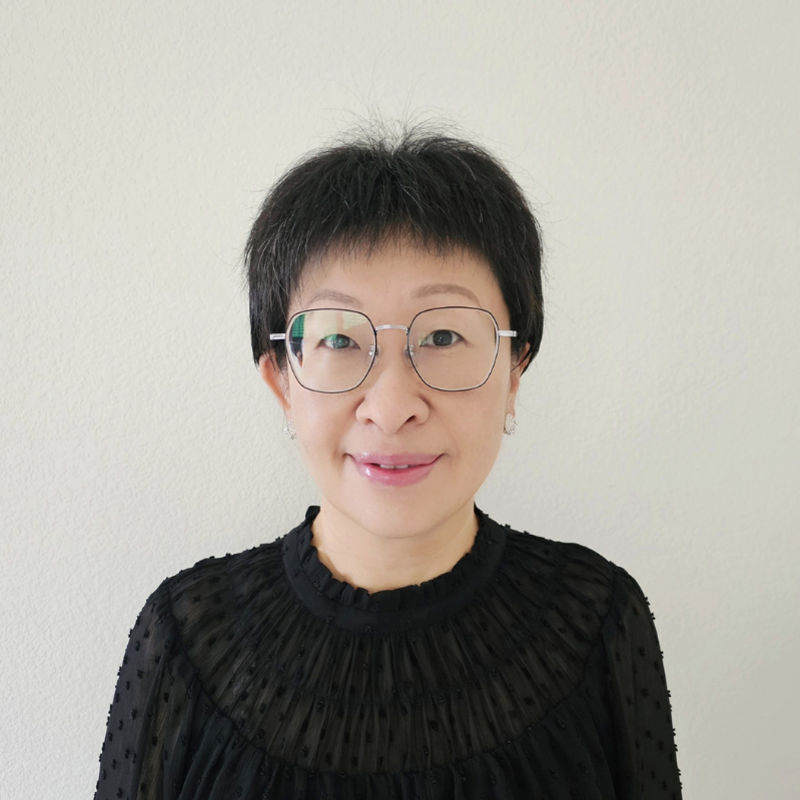 Linda Sui: Head of Mobile End Markets
Linda Sui: Head of Mobile End MarketsLinda Sui, Senior Director of Global Smartphone Strategies at TechInsights, has over 16 years of experience in the mobile device industry and over 13 years of experience focused on telecom research and consulting. In her role, Linda is responsible for delivering in-depth analysis and recommendations for the global smartphone industry to mobile carriers, handset vendors, component makers, investment banks, software vendors, and media firms worldwide. She has a passion for tracking this ever-changing industry and providing clients with insights that can help them navigate and weather any mega shifts. Her cross-cultural background and bilingual skills have given her the ability to quickly identify and grasp key trends from multiple angles.
Before joining TechInsights, Linda worked for 13 years at Strategy Analytics where she focused on research and consulting projects across the whole value chain of the smartphone industry while building and training her own research team. Through her leadership and expertise, they were able to successfully develop and grow the industry leading smartphone research team, serving over 100 clients across multiple sectors worldwide. She has won and successfully managed many large consulting projects over the course of her career, with contributions from her team of experts.
 Abhilash Kumar: Industry Analyst
Abhilash Kumar: Industry AnalystAbhilash Kumar joins TechInsights as an Industry Analyst for Smartphones with over 5 years of experience researching the global smartphone market, tracking vendors, and uncovering beneficial insights for clients. Abhilash is a recognized expert in the smartphone industry; he’s frequently quoted by international publications and has been selected as a judge for the 2024 Global Mobile Awards.
As a research professional, he has a talent for helping clients comprehend the full landscape of the smartphone market and the many ways it can be dissected, be it by country, region, price tier, channel, or vendor performance.
Prior to joining Strategy Analytics, later acquired by TechInsights, Abhilash worked for Counterpoint Research as a Research Analyst. In this role he was responsible for researching and analyzing the global smartphone market both from the supply side as well as demand. He honed his research and analytical skills tracking and forecasting global handset sales while collaborating with international teams on insight reports. His background in technology and business have given him an appreciation for semiconductors and the role they play in the telecom markets.
 Juha Winter: Associate Director, Devices Research
Juha Winter: Associate Director, Devices ResearchAs the Associate Director of Devices Research within the Mobile Devices Practice, Juha Winter brings over 20 years of experience in the wireless, ICT, and automotive industries. In this role, Juha and the Mobile Devices team at TechInsights track and forecast the half-trillion-dollar end-device market of smartphones, wearables, and VR headsets for the semiconductor industry. He has a passion for researching and identifying the wireless, wearable, AI, and VR/AR technologies that have the potential to improve people’s daily lives.
Juha’s insightful and balanced approach to the strategic analysis of mobile devices and wearables is highly valued by clients faced with a very challenging and competitive business environment. He’s known for his ability to identify weak signals and spot future mega trends well before the curve. His background in telecommunications and business have provided the foundation necessary for distilling vast, complex data sets into invaluable insights that clients depend on for successful business planning and development. Previously, Juha has worked at Robert Bosch Car Multimedia GmbH as a Senior Business Development Manager and held numerous positions over his tenure with Nokia, ranging from Lead Analyst to Manager of Strategic Planning to Research and Development. He also has a Lic.Sc. from Aalto University and MS degrees from Teknillinen korkeakoulu-Tekniska högskolan.
 Rajeev Nair: Senior Analyst, Connected Smart Devices
Rajeev Nair: Senior Analyst, Connected Smart Devices As a Senior Analyst with TechInsights’ Connected Smart Devices Service, Rajeev Nair brings over 15 years of experience in the devices and telecommunications industries. Over the course of his career, he has held multiple roles within these industries that have given him a unique perspective into the semiconductors at the core of this ever-changing technology sector. Rajeev has worked with leading IT vendors and research firms on a variety of projects including business strategies, product development and go-to-market approaches. He has a passion for tracking the continuous evolution of smart technologies and their integration into our daily lives. He enjoys helping clients understand the landscape of this market segment, looking beyond the data and trends to pinpoint tangible solutions for their business needs.
Before joining TechInsights, Rajeev was a Program Manager for the Mobility practice at Hewlett-Packard where he provided competitive analysis, insight generation, and thought leadership on the mobility ecosystem and technological developments within the smartphone, tablets, and wearables markets.
 Ville-Petteri Ukonaho: Associate Director, Device Technologies
Ville-Petteri Ukonaho: Associate Director, Device Technologies Ville-Petteri Ukonaho serves as the Associate Director of Devices Technologies at TechInsights, with over 20 years of experience in market analysis and the devices and telecommunications domains. His areas of expertise include analyzing handsets and handset technologies markets for strategy and business development purposes. In this role, he focuses on providing comprehensive research coverage of Emerging Device Technologies and their ability to power and define a range of device categories involving smartphones, handsets, robots, drones, and Bluetooth among others. Ville-Petteri has a passion for researching the abilities of these new technologies to improve our lives for the better. His background in Telecommunications Engineering and prior work with a major mobile phone company in Research and Development as well as in Business Management have given him a unique and complete perspective of the mobile phone industry which has proven critical for clients trying to understand market behaviors.
In previous positions, Ville-Petteri has worked as a Senior Strategy Manager at Microsoft where he supported devices strategy and business development activities. He has also worked as a Senior Manager of Competitive Intelligence at Nokia where he performed market and competitive intelligence for product development, strategy, sales, and business development.
 Yiwen Wu: Associate Research Director
Yiwen Wu: Associate Research DirectorYiwen Wu is an Associate Research Director at TechInsights with over 10 years of extensive experience in the technology industry. Yiwen has a reputation for being a driving force in the production of consistent, high-quality smartphone and syndicated research deliverables which have created new opportunities for vendors. She enjoys exploring the evolution of technology and generating insights on how that evolution changes the industry. Her contributions have played a key role in managing and engaging clients while she develops strategic industry connections across multiple OEMs.
In a previous role, Yiwen worked as a Senior Analyst of the Devices Team at Strategy Analytics where she was responsible for researching, forecasting, and analyzing emerging technologies and the key issues that will reshape the future smartphone markets on a global scale. Before joining TechInsights, she worked as a Business Development Manager at Microsoft Mobile and Nokia, where she managed various projects for senior executives to drive innovation and business transformation with support from R&D, design, sales, finance, and legal teams.
Ms. Wu holds a Masters Degree in Finance from Shanghai University of Finance and Economics, and a Masters Degree in Strategy from the Business School of Aalto University in Finland.
 Steven Waltzer: Director, Wearables End Market Analysis
Steven Waltzer: Director, Wearables End Market Analysis Steven Waltzer is a Director of Wearables End Market Analysis at TechInsights, with over 10 years of experience in market research. He heads up the Wearable Device Ecosystem (WDE) End Market Analysis Channel, spearheading all quarterly tracking and forecasting across smartwatches, feature watches, fitness bands, smart glasses, virtual reality, hearables, and other wearable device types. Steven has a passion for supporting innovation and decision making in the semiconductor industry through independent research and analysis. He takes pride in his ability to help clients solve business issues using quantitative market tracking and forecasting datasets, as well as qualitative market insights. His background in Finance and Economics have honed his modelling skills and informed his market forecasting and tracking efforts.
Prior to joining TechInsights, Steven worked as a Data Analyst supporting Research Analysts, Senior Analysts, and Research Directors to improve and standardize their excel models, supporting the input of data into a common database, and building and updating the next generation of Dashboards for clients and internal users.
 Alex Fuller: TRAX/MAST Systems Manager
Alex Fuller: TRAX/MAST Systems Manager Alex Fuller is the TRAX/MAST Systems Manager at TechInsights, with over 13 years of industry experience. His work covers the SpecTRAX and PriceTRAX databases where he focuses on developing and improving the collection of large-scale data, including international device and tariff pricing collection through web scraping. He is responsible for maintaining and updating data links between the TRAX systems and GSMA TAC database and facilitates the use of TRAX data in other products within TechInsights.
Alex is highly skilled in data analysis and quantitative research and has a demonstrated history of excellence in the market research industry. He has a passion for collecting data and aligning it for use within various forms of analysis. He enjoys having the opportunities to discover new solutions for challenges involving data and analysis. In previous roles, he has worked on numerous projects analyzing device specification, availability, and pricing data for multiple clients including a major smartphone manufacturer and a major intellectual property fund.
 Daniele Ripalunga: Data Processor
Daniele Ripalunga: Data Processor As a Data Processor, Daniele Ripalunga has over 9 years of experience working with the SpecTRAX and PriceTRAX databases. His responsibilities include building and maintaining web scraping agents that collect data from operators and retailers across 57 countries. He creates and maintains control systems which overlook over 3 million web scraped data points collected each month, highlighting any failed scraping agents and erroneous pricing data. He has a passion for continuously developing her knowledge of different programming languages and his background in computer sciences provides the necessary coding expertise in web scraping, SQL, and Python for big data collection cleansing, and publication.
In this role, Daniele works closely with a variety of teams within TechInsights. He is recognized as a strong collaborator and has found success on many projects including the migration of TRAX systems and his work supporting the Market Analysis Software team on the efforts surrounding Market Analysis Central.
Intelligent Home
 Edouard Bouffenie: Senior Analyst, Media and Intelligent Home Practice
Edouard Bouffenie: Senior Analyst, Media and Intelligent Home Practice Edouard Bouffenie is a Senior Analyst in the Media and Intelligent Home practice at TechInsights, with over 20 years of experience in market analysis. In this role, Edouard covers smart TVs and TV streaming platforms. He has a passion for expanding the granularity of data and analysis to uncover insights which help clients fully understand their markets, competitors, and consumers. His background in International Business provides a strong foundation for understanding the considerations affecting businesses and the markets in which they operate, from financials to marketing and commercial strategy.
Previously, Edouard worked as a Benchmarking Architect within the Telligen division, focusing on telecoms tariff information and benchmarking. During this time, he created the telecom bundle price benchmarking system which was officially adopted by the Organisation for Economic Co-operation and Development.
 Manish Rawat: Associate Analyst
Manish Rawat: Associate AnalystManish Rawat is a Data Analyst for Wireless Smartphones Services, focus on mobile and connected devices, including handsets, smartphones, wearables, and connected consumer devices and coming up with insights relevant for clients.
Prior to joining to SA, Manish worked for Techarc, where he was responsible for researching and analyzing the India connected consumer devices market both from supply side as well as demand side and various consulting projects. Also responsible for making dashboards and visualizations to draw meaningful insights by using visualization tool such as Microsoft Power BI, Tableau and Flourish and writes deep-dive insight articles. Manish graduated from Maharshi Dayanand University, Rohtak with B.Tech in Mechanical Engineering, and has post-graduate diploma in Management from Jaipuria Institute of Management, Noida.
 Peng Peng: Industry Analyst
Peng Peng: Industry AnalystPeng Peng is an Industry Analyst in the Global Wireless Practice at TechInsights, with over 3 years of experience in the telecommunications industry. Peng covers market research, analysis, and forecasting for a variety of electronics, with a focus on strategic advisory of mobile devices such as 5G smartphones and wearables. He enjoys working with clients to help them understand emerging trends and insights concerning volume, price, revenue, operating margin, and profitability analysis. His background in electronics provides a depth of knowledge in digital and analogue circuits, hardware, software, and the chips and algorithms used in AI.
In previous roles, Peng worked for China Telecom and China Unicom Europe where he managed supply chains and helped international enterprise customers, including handset and consumer electronics manufacturers, internet companies, and financial groups, fulfil their local requirements for advanced technology.
 Lauren Guenveur: Senior Analyst, Connected Computing Devices
Lauren Guenveur: Senior Analyst, Connected Computing Devices Lauren Guenveur is a Senior Analyst in the Connected Computing Devices practice, with over 10 years of experience in the technology industry. She has a reputation for covering some of the most important consumer electronics for some of the largest companies over the past decade. At TechInsights, Lauren is responsible for tracking and forecasting the notebook market across 88 countries, as well as end-user behavior and demand. She enjoys working closely with clients, providing insights on where the notebook PC market is headed, how they are faring against competitors, and how they can maintain market share and grow revenue in a saturated and mature market.
Throughout her career she has covered a variety of technologies including smartphones, wearables, tablets, and PCs while advising companies on go-to market strategies, pricing, loyalty and new customer acquisition, and competitive intelligence. Prior to joining TechInsights, Lauren was a senior research analyst at IDC covering the worldwide PC and tablet market and tracking US specific data.
IoT Ecosystems
 Gina Luk: Director, Telecom Strategies
Gina Luk: Director, Telecom StrategiesDirector of the Telecom Strategies at TechInsights, Gina Luk leads research in industry 4.0, future networks, edge platforms, and communications and networking. She provides strategic insight and perspectives on the value-chain implications for Telecom operators and their direct and indirect suppliers, including devices and network equipment OEMs, module and subsystem vendors, and semiconductor vendors. She is dedicated to helping clients achieve their goals and is a recognized thought leader in the wireless technology domain, serving as a judge for the GSMA GLOMO Awards for the past 7 years.
Gina has over 20 years of research experience within Telecom, Mobility, and IoT. Before joining TechInsights, Gina was a Telecom consulting and research manager with AMI-Partners (an Analysys Mason Company), where she led and managed multi-country Telecom consulting projects across multiple geographies. Over her career she has worked on many custom consulting projects identifying opportunities in the global devices market and has authored white papers on 5G evolution, enterprise digital transformation, business value of cloud, business applications, and mobile security. Gina also worked at IDC and Flex in the Telecoms team where she was the lead analyst for optical networking, mobile operators’ strategy, and carrier equipment markets across the globe.
 Waseem Haider: Principal Analyst, Telecom Strategies
Waseem Haider: Principal Analyst, Telecom StrategiesWaseem Haider joins TechInsights’ Telecom Strategies Group as a Principal Analyst for IoT & Enterprise Research, with over 17 years of experience working in the technology and telecom industries. In his research Waseem focuses on IoT, IIoT, and Industry 4.0 domain, along with emerging technologies and vertical markets tied to the semiconductor industry. In a short time, his research, analysis, and data forecasts have already proven critical for successful strategic planning, product and technology roadmaps, and GTM strategy.
Waseem has a passion for helping his clients understand the benefits and challenges of existing and emerging technologies. His ability to simplify the complexities around technologies and challenging the status quo has earned him the trust of clients, partners, colleagues, and peers alike. In this role he brings critical analytical thinking and a commitment to further strengthen the existing TechInsights research on IoT and related domains, along with identifying potential areas of expansion that could prove integral for clients.
Prior to joining TechInsights Waseem worked for boutique analyst firms MTN Consulting and Dataxis covering telecom and technology markets. Before switching to other side of the table, Waseem worked for technology vendors Orga Systems GmbH (now Optiva) and Motorola Solutions in Strategy. and Market/Competitive Intelligence. Waseem is based in Berlin, Germany and holds an MBA in Strategy & Finance from Berlin School of Economics and Law. He is fluent in Hindi, German and English. An avid reader and mentor, Waseem also teaches Digital Transformation (DX), as a visiting lecturer at Gisma University of Applied Sciences.
Media and Services
 David MacQueen: Service Director for Executive Programs
David MacQueen: Service Director for Executive ProgramsAs the Service Director for Executive Programs, David MacQueen is tasked with covering the semiconductor value-chain to identify emerging technologies and new opportunities for research teams, while ensuring alignment across the research produced by TechInsights. He has over 20 years of experience in semiconductor-related industries and has an inherent ability to contextualize data that helps clients understand the big picture.
David’s instincts on research topics are consistently ahead of the curve. He was covering the smartphones market long before the iPhone transformed it and saw firsthand how streaming services and the App Store fundamentally changed consumer behavior. During his time at Strategy Analytics as the Director of Wireless Media Strategies, David provided insight and strategic advice on all aspects of consumer mobile data products and services, with a focus on mobile advertising, games, music, social networking, and video.
Previously, David worked at Screen Digest as the Head of Mobile Media Intelligence where he built and subsequently headed up the 'Mobile Media Intelligence' service, providing data and analysis on the mobile sector for media companies.
 Nitesh Patel: Director of Smart Home Strategies
Nitesh Patel: Director of Smart Home StrategiesAs Director of Smart Home Strategies, Nitesh Patel brings a wealth of knowledge and experience to TechInsights, with over 20 years of industry research experience spanning the telecommunications sector, with a recent focus on consumer electronics and smart home technology. Nitesh is heavily involved in the development of market reports, company and product profiles, competitive positioning, market forecasts, and assessing the impacts of innovations shaping opportunities across the smart home ecosystem. He enjoys developing deep and trusted relationships with clients, providing them with insights on the potential growth opportunities for smart home devices within the semiconductor industry, including smart speakers and displays, surveillance cameras, video doorbells, robot vacuum cleaners, smart thermostats, and many more.
Before joining TechInsights, Nitesh was the Director of the Wireless Media Strategies service at Strategy Analytics where he played a leading role in the growth of the department while maintaining its’ relevance, despite a shift in industry dynamics. In this role, he developed a sterling reputation amongst his peers as a strong collaborator and led research covering a broad range of consumer mobile entertainment products, services, and companies, including telcos and device makers.
Service Providers
 Phil Kendall: Lead Forecaster, Market Analysis
Phil Kendall: Lead Forecaster, Market AnalysisPhil Kendall brings over 25 years of experience collecting, analyzing, and forecasting market data to his role as Lead Forecaster in TechInsights' Market Analysis division. He is committed to creating a forecasting environment at TechInsights that allows subject matter experts to maximize their time spent building compelling stories and scenarios of the future of ICT and semiconductor industries. He believes that accurate market data and expert forecast analysis are both critical to decision making in the semiconductor industry, and that these are both core building blocks in the forecasting architecture being built at TechInsights.
In his day-to-day, Phil is responsible for enabling TechInsights' analysts to support players across the semi-conductor value chain with the data they need to take critical business decisions. His background in Economics & Econometrics enables him to build interwoven datasets that are internally consistent and logical and have the flexibility to evolve to accommodate the wealth of information accumulated as markets evolve.
Phil’s strong work ethic and industry knowledge has earned the respect of colleagues and clients alike. His data and market insights have proven critical for clients in evaluating competitive dynamics and assessing strategic options based on facts rather than speculation.
Advisory
 Chris Ambrosio
Chris AmbrosioStarting at TechInsights over 20 years ago, Chris Ambrosio currently serves as an Executive Director of Market Analysis Consulting. His pragmatic nature and strong work ethic help in defining and delivering research solutions that companies rely on to fully understand their markets and their competitors.
In his previous role as an Executive Director in the Global Wireless Practice, Chris managed a range of custom projects across the wireless value chain including business case development, product planning, market assessments, and competitive analysis for device vendors, service providers, semiconductor vendors, and software suppliers. His sound grasp of the business fundamentals for mobile communications companies and experience in marketing and sales has made him a trusted strategy partner for many of the largest and most well-known handset OEMs and mobile operators around the world.
Chris enjoys building connections with clients, helping them evaluate and identify opportunities that may not be obvious or well-defined. He believes that equally important to skills or knowledge, is the ability to truly listen to customers and understand the context of what they are trying to communicate.
 Ali Sohani: Senior Consulting Associate
Ali Sohani: Senior Consulting AssociateAli Sohani joins TechInsights as a Senior Consulting Associate with over 13 years of industry experience. In this role, Ali is able to help clients make sense of complexity—whether in data, strategy, or technical details. Being an avid learner and early adopter of new technologies allows Ali to gain intuitive insights into emerging market dynamics and user behavior. Ali believes that approaching every problem with a fresh perspective and healthy dose of skepticism can help expose critical insights that others might miss. He has a passion for uncovering these unique insights that more often than not lead to strategic breakthroughs and real, measurable value for clients. His background in engineering provides a strong foundation in both the understanding of technology and the numerical methods used in quantitative modeling.
 Chase Williams: Senior Consulting Associate
Chase Williams: Senior Consulting AssociateChase Williams joins TechInsights as a Senior Consulting Associate with over 15 years of experience in emerging technologies, manufacturing, and the automotive sectors. In this role, Chase supports clients in optimizing their semiconductor supply chains, often working closely with them to identify semiconductor and emerging technology trends while focusing on how they can be integrated into a strategic roadmap. He has a passion for helping clients harness these emerging technologies to create meaningful and lasting impact that not only drives innovation, but shapes broader industry trends and contributes to transformative changes in society. His focus on a client-centric approach allows for a deep understanding of his clients’ journeys and their evolving needs. Chase believes that the more attuned he can be to a client’s pain points, the better he can deliver solutions that meet and exceed expectations. His background in electrical and mechanical engineering coupled with a diverse portfolio of professional experiences have provided both a strong foundation for understanding the technical and market aspects of advanced technologies and a skillset for bridging the gap between engineering, market strategy, and broader business objectives.
 Christopher Nelson: Consulting Associate
Christopher Nelson: Consulting AssociateChris Nelson joins TechInsights as a Consulting Associate, focusing on the semiconductors used in the smartphone and tablet markets. Along with his team, he works to provide clients with a country level breakdown of smartphone and tablet market estimates for revenues, units, and average selling prices for a variety of vendors and regions. As an Analyst, Chris has been quick to find his footing. He is extremely detail-oriented, and his insights have proven essential for clients trying to both understand and navigate the market competition.
Though new to the industry, Chris has found a passion for helping clients leverage data and technology to drive innovation and growth. Along with his day-to-day responsibilities, he has recently focused on creating new modeling methodologies to further align market estimates with syndicated data.
Spend Insights
Heads Spend Insights business unit comprising of Teardown, Pricing & Costing products within TechInsights. Prior to joining TechInsights, Jagrut was US head of benchmarking at Nokia. Jagrut has more than 25 years of experience in product development, product management and competitive intelligence in AT&T/ Lucent/ Alcatel-Lucent & Nokia. He led competitive assessments, reverse engineering, design consultations, target cost/ feature settings and used this to advise supply chain, product management and executives in making portfolio decisions to increase portfolio competitiveness.
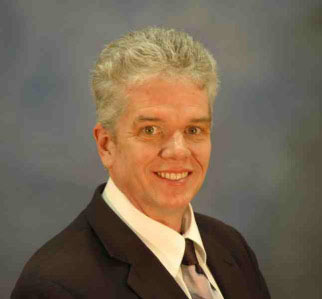 Al Cowsky: Manager, Costing Analysis
Al Cowsky: Manager, Costing AnalysisAl Cowsky is the Costing Manager at the Spend Insights business unit. Since 2013, Al has overseen all component pricing methodologies, models, and pricing related to TechInsights' teardown projects. Before joining TechInsights in 2013, Al spent eleven years as the manager of Motorola's Competitive Benchmarking (Teardown) team, conducting work similar to TechInsights' teardown projects but primarily for an internal audience.
 Barbara Slabinski: Senior Costing Analyst
Barbara Slabinski: Senior Costing AnalystBarbara Slabinski is a Senior Cost Analyst at the Spend Insights business unit. Since joining TechInsights Inc. in 2021, Barbara has been focusing on all technical aspects of the Components Price Landscape and Components Price Analyzer tools. Barbara brings 24 years of experience as a Member of Technical Staff at Nokia, Alcatel-Lucent, and Lucent Technologies. She specialized in wireless infrastructure equipment analyses like base stations, mMIMO Active Antenna, Remote Radio Heads, microwave, mmWave, small cells, femtocells, etc. She developed cost models for amplifiers, filters, radios, and digital subassemblies. Her last role was Sr. Benchmarking Manager at Nokia where she led RF electronic product and Small Cells competitive analyses.
 Stacy Wegner: Subject Matter Expert
Stacy Wegner: Subject Matter ExpertStacy Wegner is the Senior Technology Analyst at TechInsights’ Teardown division, responsible for ensuring the highly technical data produced by our analysts is transformed into consumable competitive intelligence. Stacy has an extensive background in advanced technology devices, marketplace analysis, and TechInsights products and practices.
 Deisy Fernandes: Cost Analyst
Deisy Fernandes: Cost AnalystDeisy Fernandes is a Junior Costing Analyst where she provides technical support for TechInsights Costing products such as Teardown and Mobile Handset Cost Model (HCM). She has a MEng in Engineering Management from University of Ottawa and has 9 years of experience with Consumer Electronics Teardown Analysis and New Product Introduction.
Huawei Mate 80 Pro Max Teardown Confirms Kirin 9030 Pro on SMIC N+3
TechInsights’ teardown of the Huawei Mate 80 Pro Max confirms the Kirin 9030 Pro on SMIC’s N+3 process and reveals major upgrades in display, cameras, and connectivity.
2026 Advanced Packaging Outlook Report
Discover the five expectations defining advanced packaging in 2026, including CPO adoption, HBM4 demand, panel and glass scaling, 3D thermal challenges, and chiplets for mobile.
Trump Approves H200 Exports: Impact on NVIDIA, TSMC & HBM
Trump’s approval of H200 exports to China could reshape GPU, packaging, and HBM markets. TechInsights analyzes supply constraints, pricing, and $40–50B demand.









